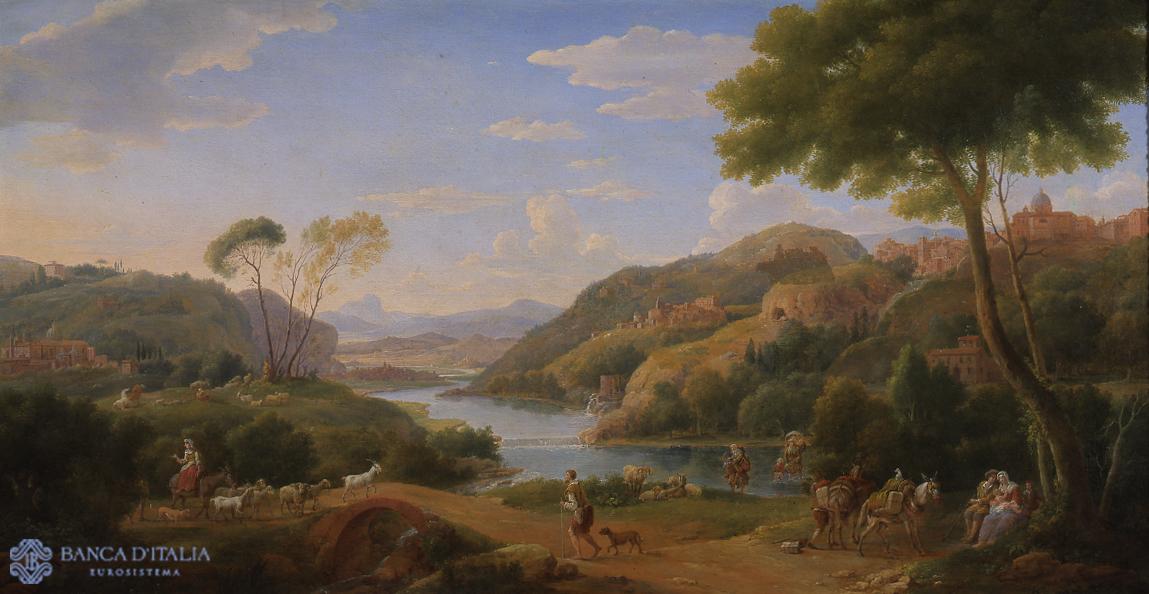The foreground of this bright landscape is filled with small, lively figures: a peasant-woman on a mule leads her herd of goats to pasture, a traveller and his dog set off across a bridge, and a family rests in the shade of a large tree. Others wade across the river that winds its way through the pleasant valley, disappearing into the distance. Although the landscape is imaginary it is depicted in minute detail; the hilly countryside, with its waterfalls, caves and varied vegetation is dotted with small villages and country villas.
Like its companion, this painting shows a typical Roman landscape in the first half of the eighteenth century. Van Lint specialized in such genre scenes, sharing this interest with his fellow countryman Jan Frans van Bloemen and with the Roman painters Paolo Anesi and Andrea Locatelli. All modelled their vedute, which are remarkably open and sunny, bathed in the warm colours of Italy, on those of Gaspar van Wittel, who was already producing similar works in the closing decades of the seventeenth century, such as the huge paintings of the Colonna family’s estates. However, unlike van Wittel, who faithfully reproduced places that really existed, van Lint created landscapes that were solely the fruit of his imagination.
Hendrik Frans Van Lint , detto lo Studio, Veduta ideata dei Castelli Romani
Imaginary View of the Castelli Romani
Painting
18th century AD
Landscape

Artist
Date
1718
Material and technique
Oil on canvas
Measurements
56 x 108 cm
Compiler
Alessandro Zuccari
